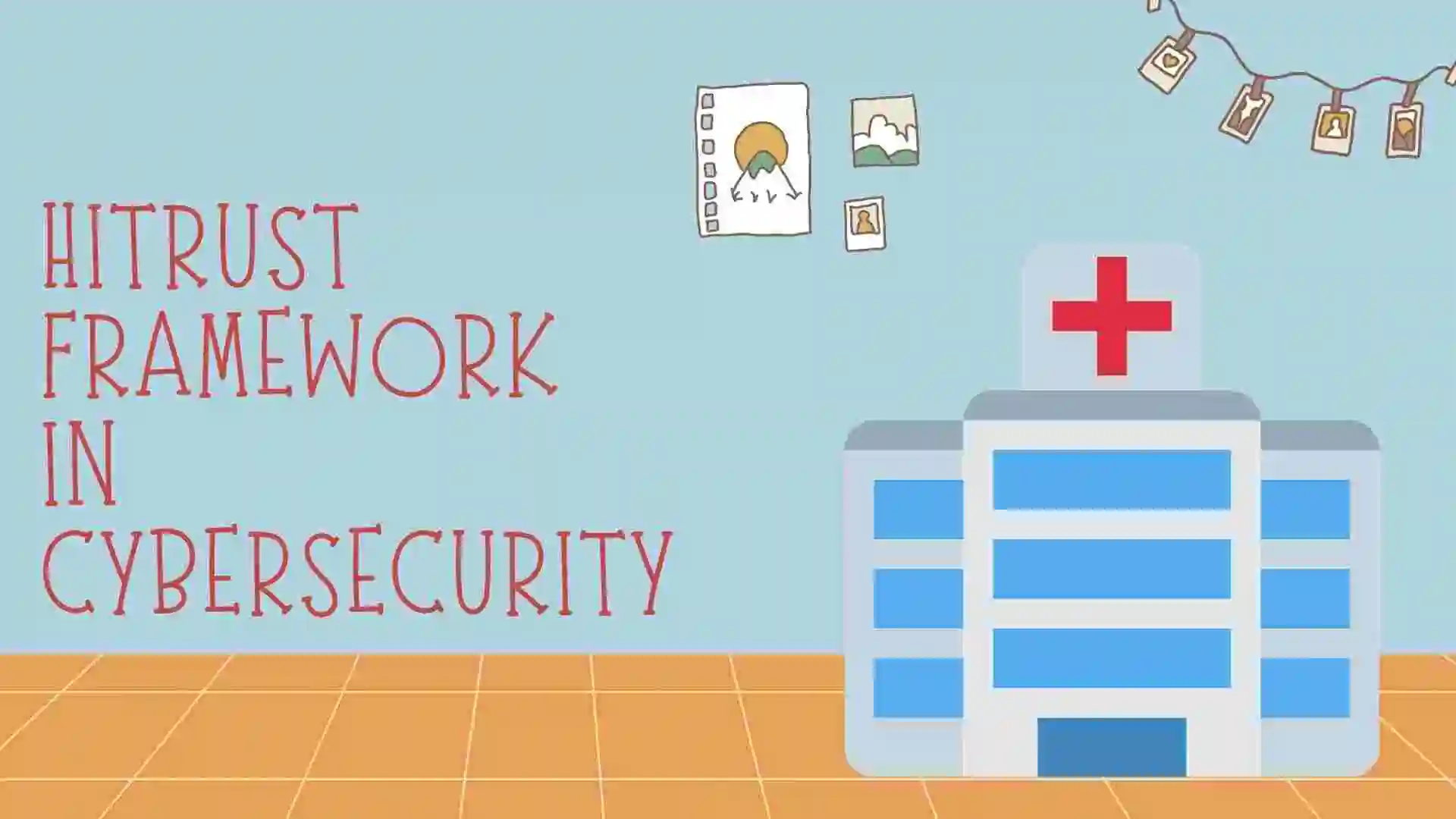In this blog, we will learn about the HITRUST Framework, which is one of the most important Cyber Security Laws. We will see the main purpose of this law and its reasons. So let’s get started with the blog.
Table of Contents
- Introduction to HITRUST Framework
- History of HITRUST Framework
- Keypoints of HITRUST Framework
- HITRUST Compliance Best Practices
- Difference between HITRUST and HIPAA
- Conclusion
- FAQ
- Recent Articles on Computer Networks
- Blogs Related to Cyber Security
Introduction to HITRUST Framework
HITRUST, which stands for Health Information Trust Alliance, is a widely recognized and comprehensive security framework designed to address the specific challenges of managing and protecting sensitive healthcare information.
HITRUST offers a standardized approach to information security and privacy management, specifically tailored to the healthcare industry. It provides organizations with a structured framework to assess, manage, and mitigate security risks while ensuring compliance with regulatory requirements.
History of HITRUST Framework
The Health Information Trust Alliance (HITRUST) Framework is a comprehensive set of standards and controls designed to help organizations in the healthcare industry manage and secure sensitive health information. Here is an overview of the history and development of the HITRUST Framework:
- Foundation and Early Development (2007–2009):
- HITRUST was founded in 2007 as a response to the increasing need for a standardized approach to healthcare information security.
- In 2009, HITRUST released the first version of its framework, known as the Common Security Framework (CSF). The CSF was developed in collaboration with healthcare organizations, regulatory bodies, and cybersecurity experts.
- CSF Adoption and Expansion (2010s):
- Over the next decade, the HITRUST CSF gained traction in the healthcare industry as a widely adopted framework for managing security and privacy risks.
- HITRUST continued to update and enhance the CSF to address evolving security threats and regulatory requirements.
- Alignment with Regulatory Standards (2010s):
- HITRUST worked to align the CSF with various regulatory standards and frameworks, including the Health Insurance Portability and Accountability Act (HIPAA), the National Institute of Standards and Technology (NIST) Cybersecurity Framework, and the International Organization for Standardization (ISO) standards.
- This alignment helped healthcare organizations achieve compliance with multiple regulatory requirements by using a single framework.
- Expansion Beyond Healthcare (2010s):
- While originally developed for the healthcare sector, the HITRUST CSF gained recognition in other industries facing similar security and compliance challenges.
- HITRUST adapted the framework to accommodate the needs of organizations in sectors such as finance, energy, and more.
- Integration of Risk Management and Privacy (2010s):
- HITRUST expanded its framework to include risk management and privacy components, making it a more comprehensive solution for managing information security, risk, and compliance.
- This integrated approach helped organizations address a broader range of security and privacy concerns.
- Certification and Assurance (2010s-Present):
- HITRUST introduced a certification program known as the HITRUST CSF Certification, which allows organizations to undergo a rigorous assessment to demonstrate their adherence to the framework.
- Organizations achieving HITRUST certification can provide assurance to their stakeholders that they have implemented strong security and privacy practices.
- Continued Updates and Enhancements (Ongoing):
- HITRUST continues to evolve and update the CSF to address emerging cybersecurity threats, changes in regulatory requirements, and advancements in technology.
- The organization actively engages with industry stakeholders to gather feedback and ensure that the framework remains relevant and effective.
Keypoints of HITRUST Framework
Key points about the HITRUST Framework:
A) Security and Compliance:
HITRUST’s primary objective is to enhance the security posture of healthcare organizations by aligning various industry regulations, standards, and best practices. It helps organizations achieve compliance with multiple regulations, including HIPAA (Health Insurance Portability and Accountability Act) and HITECH (Health Information Technology for Economic and Clinical Health Act).
B) Risk Management:
HITRUST provides a comprehensive risk management framework that enables organizations to identify, assess, and prioritize risks associated with their information systems and data. This helps in implementing appropriate security measures and controls to mitigate these risks effectively.
C) Certification:
HITRUST certification is a rigorous process where organizations undergo an assessment to demonstrate their compliance with the HITRUST Common Security Framework (CSF). Achieving HITRUST certification showcases an organization’s commitment to safeguarding sensitive healthcare information.
D) Common Security Framework (CSF):
The HITRUST CSF is a set of controls, requirements, and guidelines that help organizations address various security, privacy, and regulatory challenges. It provides a structured approach to information protection, covering areas such as access control, data encryption, incident response, and more.
E) Third-Party Assurance:
HITRUST offers a standardized and streamlined approach to assessing third-party vendors’ security practices. This is particularly important in the healthcare industry, where organizations often rely on external service providers to handle patient data and other sensitive information.
F) Continuous Improvement:
HITRUST encourages a culture of continuous improvement in information security and risk management. Organizations are expected to regularly assess and enhance their security controls and practices to adapt to evolving threats and regulatory changes.
G) Industry Collaboration:
HITRUST fosters collaboration among healthcare organizations, regulatory bodies, and technology vendors. This collaborative approach helps to share best practices, insights, and solutions to common security challenges faced by the healthcare industry.
HITRUST Compliance Best Practices
HITRUST (Health Information Trust Alliance) compliance is a complex process that requires organizations to adhere to a comprehensive framework for managing information security, privacy, and risk. To achieve and maintain HITRUST certification successfully, consider these best practices:
- Understand HITRUST Requirements:
- Thoroughly understand the HITRUST Common Security Framework (CSF) and how it applies to your organization’s operations. This includes knowing the specific requirements and controls applicable to your scope.
- Appoint a HITRUST Coordinator:
- Designate a HITRUST coordinator or project manager responsible for overseeing the compliance process. This individual should have a deep understanding of HITRUST requirements.
- Scope Definition:
- Clearly define the scope of your HITRUST assessment, including the systems, processes, and data that are in-scope and out-of-scope. Ensure the scope accurately reflects your organization’s environment.
- Engage a Qualified Assessor:
- Select a HITRUST Qualified Assessor (HQA) who is experienced and accredited by HITRUST. Collaborate closely with the HQA throughout the compliance process.
- Gap Analysis:
- Conduct a thorough gap analysis to identify areas where your organization currently falls short of HITRUST requirements. This analysis serves as the foundation for remediation efforts.
- Risk Assessment:
- Perform a comprehensive risk assessment to identify and prioritize security and privacy risks specific to your organization. This assessment should guide control implementation and risk management efforts.
- Customized Approach:
- Tailor your HITRUST compliance efforts to align with the unique needs and risks of your organization. Avoid a one-size-fits-all approach.
- Document Everything:
- Maintain meticulous records of all compliance activities, including policies, procedures, evidence of controls in place, and documentation of assessments and audits.
- Regular Training and Awareness:
- Provide ongoing security and privacy training to employees to ensure they understand their roles and responsibilities in maintaining compliance.
- Policies and Procedures:
- Develop, implement, and continuously update policies and procedures that align with HITRUST requirements. Ensure they are accessible to all relevant personnel.
- Continuous Monitoring:
- Implement continuous monitoring processes to detect and respond to security threats and vulnerabilities in real-time.
- Incident Response Plan:
- Create and maintain a robust incident response plan that outlines procedures for identifying, reporting, and responding to security incidents.
- Vendor Management:
- Establish a vendor management program to assess and manage the security practices of third-party vendors and partners.
- Audit Trails and Logging:
- Enable audit trails and logging to track and analyze system activity for security and compliance purposes.
- Privacy Compliance:
- Address privacy requirements and conduct data privacy impact assessments, especially if your organization deals with sensitive personal information.
- Penetration Testing and Vulnerability Scanning:
- Conduct regular penetration testing and vulnerability scanning to identify and remediate security weaknesses.
- Reporting and Remediation:
- Regularly generate reports on compliance progress, findings, and remediation efforts. Address identified gaps and vulnerabilities promptly.
- External Assessment:
- Engage your HITRUST HQA to perform an external assessment and validate your organization’s compliance.
- Certification Maintenance:
- After achieving HITRUST certification, maintain ongoing compliance by regularly reviewing and updating security and privacy practices.
- Educate and Communicate:
- Foster a culture of security and compliance within your organization by educating employees and stakeholders about HITRUST and its significance.
- Stay Informed:
- Stay informed about changes in HITRUST requirements, as they may evolve over time. Monitor updates and adjust your compliance program accordingly.
- Engage Experts:
- Consider working with experienced HITRUST consultants or advisors who can provide guidance and expertise throughout the compliance process.
Remember that HITRUST compliance is an ongoing journey, that requires commitment, resources, and a mindset of continuous improvement. By following these best practices, your organization can better navigate the complexities of HITRUST and enhance its overall security and privacy posture.
Difference between HITRUST and HIPAA
HITRUST and HIPAA are two distinct but related concepts within the healthcare industry, both focusing on information security and privacy. Let’s compare HITRUST and HIPAA:
HITRUST (Health Information Trust Alliance):
- Nature: HITRUST is not a law or regulation; it’s a private organization that offers a comprehensive security framework and certification program for healthcare organizations.
- Framework: HITRUST’s Common Security Framework (CSF) is a set of controls, requirements, and guidelines that align various standards and regulations (including HIPAA) to provide a comprehensive approach to information security and privacy.
- Scope: While HITRUST is broader and covers a wide range of security and privacy domains, it also addresses other regulations beyond HIPAA, making it more comprehensive in terms of coverage.
- Certification: HITRUST certification involves a thorough assessment of an organization’s security controls and practices against the HITRUST CSF. It demonstrates an organization’s commitment to a high level of information security and privacy management.
- Flexibility: HITRUST is adaptable to various industries, not just healthcare. It’s designed to provide a scalable framework that can be applied to organizations of different sizes and sectors.
HIPAA (Health Insurance Portability and Accountability Act):
- Nature: HIPAA is a federal law enacted in the United States to ensure the privacy and security of protected health information (PHI) held by covered entities (healthcare providers, health plans, and healthcare clearinghouses) and their business associates.
- Regulation: HIPAA regulations include the Privacy Rule, which deals with the use and disclosure of PHI, and the Security Rule, which outlines the security standards for electronic protected health information (ePHI).
- Scope: HIPAA’s primary focus is on protecting the privacy and security of patient’s health information. It has specific requirements and regulations tailored to the healthcare industry.
- Compliance: Covered entities and business associates must comply with HIPAA regulations to ensure the confidentiality, integrity, and availability of PHI and ePHI. Non-compliance can lead to legal penalties.
- Enforcement: HIPAA is enforced by the U.S. Department of Health and Human Services (HHS) through the Office for Civil Rights (OCR). Violations can result in fines, corrective actions, and reputational damage.
Conclusion
In summary, while both HITRUST and HIPAA relate to healthcare information security and privacy, HITRUST is a framework and certification program that encompasses a broader range of standards and regulations, including HIPAA. HIPAA, on the other hand, is a federal law specific to the protection of health information in the United States and is enforced by the government. Organizations in the healthcare industry often use HITRUST to help them comply with HIPAA requirements while also addressing other security and privacy needs.
Note: This blog is mostly based on Wikipedia.
FAQ
HITRUST, which stands for Health Information Trust Alliance, is a widely recognized and comprehensive security framework designed to address the specific challenges of managing and protecting sensitive healthcare information.
HITRUST is not only for healthcare. Although the framework was originally created to help manage the security risks that come with handling healthcare information, it has since expanded to embrace all industries.
Recent Articles on Computer Networks
- Introduction to Computer Networking | What is Computer Network
- What are Topology & Types of Topology in Computer Network
- What is FootPrinting in Cyber Security and its Types, Purpose
- Introduction to Cloud Computing | What is Cloud Computing
- Distributed Shared Memory and Its Advantages and Disadvantages
- What is VPN? How doe VPN Work? What VPN should I use?
- What is an Internet and How the Internet Works
- What is a Website and How Does a Website or web work?
- Introduction to Virus and different types of Viruses in Computer
- What is TCP and its Types and What is TCP three-way Handshake
- What is UDP Protocol? How does it work and what are its advantages?
- What is an IP and its Functions, What is IPv4 and IPv6 Address
- What is MAC Address and its Types and Difference MAC vs IP
- What is ARP and its Types? How Does it Work and ARP Format
- Sessions and Cookies and the Difference Between Them
- What is ICMP Protocol and its Message Format?
- What is Big Data? Characteristics and Types of Big Data
- Disciplines of CyberSecurity | What are the goals of CyberSecurity?
- What is Firewall, Features, Types and How does the Firewall Work?
- Network Scanning, Types, and Stealth Scan in Computer Network
- Cryptography and its Types in Ethical Hacking
- Tor Browser and How does it Work | Onion Router Tutorial
- Proxy Server, Advantages, Difference between Proxy Server & VPN
- DHCP Protocol and What Are the Pros and Cons of DHCP
- Intrusion Detection System(IDS) and What are the types of IDS
- Domain Name Server, How Does It Work, and its advantages
- Telnet: Introduction, How Does it Work, and Its Pros and Cons
- SOC: Introduction, Functions performed by SOC, and its Pros
- What is SIEM? | What is the Difference between SIEM and SOC?
- Application Layer in OSI Model | OSI Model Application Layer
- What is SSL Protocol or SSL/TLS and SSL Handshake, and Architecture of SSL
Blogs Related to Cyber Security
- What is Ethical Hacking || Introduction to Ethical Hacking
- System Security and Protection in Cybersecurity
- HIPAA (Health Insurance Portability and Accountability Act) in Cyber Security Law
- PCI DSS (Physical Card Industry and Data Security Standard) in Cyber Security Law
- What is GLBA (Gramm-Leach-Bliley Act) in Cyber Security Law?
- What is NIST (National Institute of Standards and Technology)?
- What is GDPR (General Data Protection Regulation)?
- What are ISO 27001 and CIA in Cyber Security Law?




